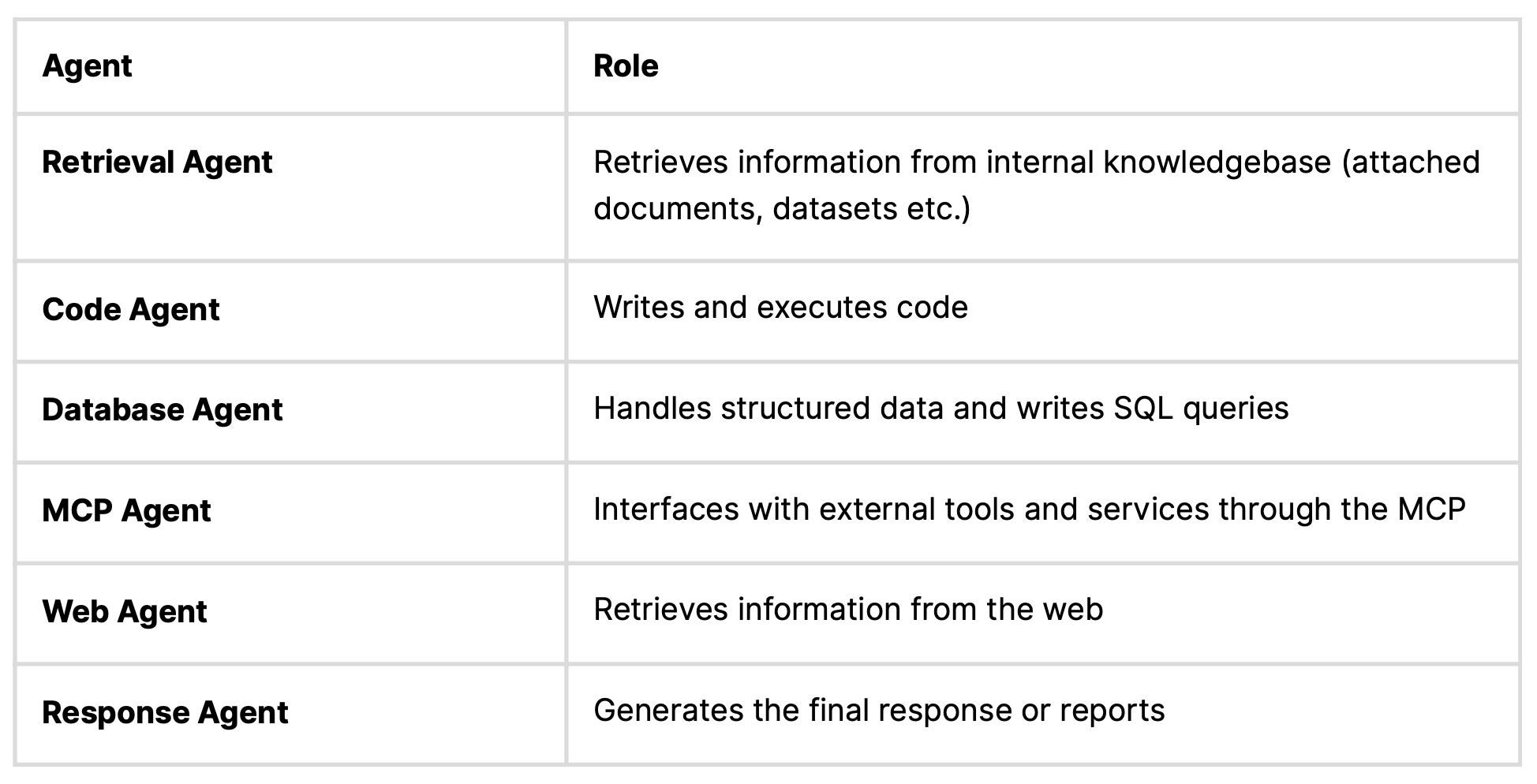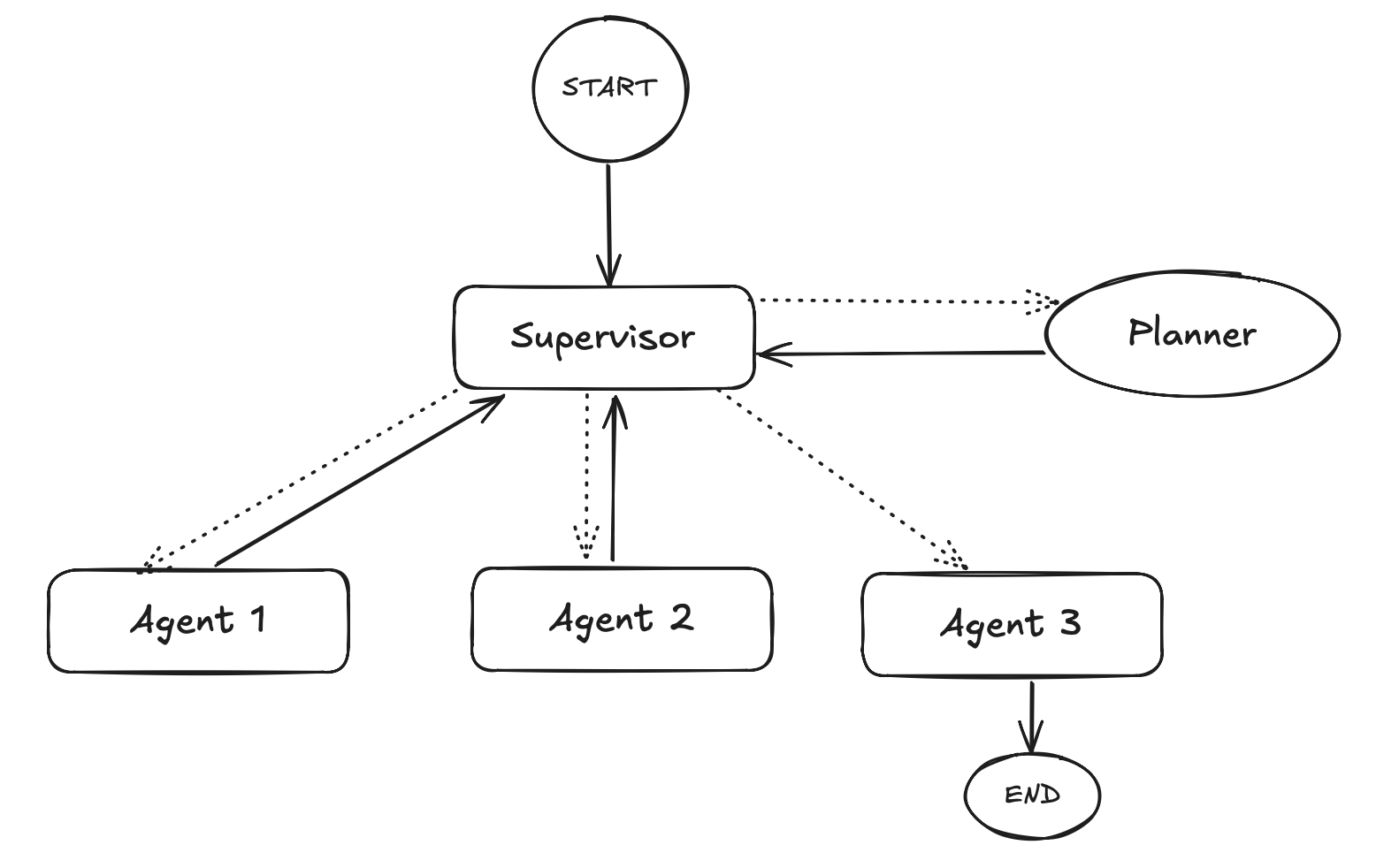Beyond Agentic Systems
Most agentic systems today pair a single large language model (LLM) with a set of tools, for example, a search API, a database, or a code executor. The LLM acts as the controller, deciding which tool to call and interpreting the results before moving on to the next step.
This setup works well for contained problems, but it struggles with complex, multi-step reasoning. When tasks involve hundreds of documents, interconnected data systems, or dependencies between subproblems, a single agent’s linear reasoning loop becomes brittle and inefficient.
At Predli, we wanted to build something more scalable, a system that could coordinate multiple specialized agents, each handling a specific layer of reasoning or domain expertise. The result is H-MAC (Hierarchical Multi Agent Cognition), a framework designed for structured, collaborative reasoning at scale.
From answers to reasoning
H-MAC is a hierarchical cognitive architecture that organizes how multiple specialized agents collaborate to solve complex problems.
Where a typical agentic system pairs one LLM with a set of tools, letting the model decide when to search, call an API, or run code, H-MAC introduces structured coordination. It plans rather than reacts: decomposing a goal into smaller, ordered subtasks, assigning each to the most capable agent, and supervising the full workflow. The system dynamically adapts as conditions change, maintaining global awareness across all agents.

This architecture turns reasoning from a black box into a transparent, verifiable process.
The architecture
At the core of H-MAC lies a supervisor agent equipped with a planner tool, a meta-level controller responsible for orchestrating the entire reasoning process. When given a task, it:
1. Interprets the goal and generates a structured plan.
2. Decomposes that plan into subtasks, each with explicit dependencies.
3. Selects the appropriate specialized agents to execute each subtask.
4. Monitors their progress and replans dynamically if needed, until the final output is generated.
These specialized agents include:

Each agent can operate independently, but the supervisor ensures that their outputs remain contextually aligned and logically consistent.

Reasoning as a process
Unlike single-step inference, H-MAC treats reasoning as a dynamic process that can evolve over time. Internally, reasoning plans are represented as graphs, where each node corresponds to a reasoning step and each edge defines a dependency between steps.

If one agent produces a low-confidence result, the supervisor replans - modifying the graph, reassigning tasks, or injecting new context. This design allows H-MAC to handle problems that exceed an LLM’s context window or require long-horizon reasoning - such as multi-document analysis or iterative validation.
Adaptive reasoning
A key differentiator of H-MAC is adaptivity. When agents encounter unexpected results or incomplete data, the supervisor intervenes - replanning without discarding prior progress. This gives H-MAC a degree of resilience that traditional models lack. It doesn’t just retry; it rethinks - adjusting its plan, refining prompts, or choosing alternative tools based on prior context. Over time, these adjustments create a self-correcting reasoning loop - a foundation for robust and autonomous AI workflows.
Enterprise Relevance
For organizations, H-MAC’s value lies in its ability to manage complex, multi-step queries that require coordination, planning, and adaptive reasoning. Instead of treating each task as a single prompt-response interaction, H-MAC structures the entire reasoning workflow from goal interpretation to execution and verification across specialized agents.
Typical applications include:
• Multi-step analytical workflows
• Planning and optimization tasks involving multiple data sources or systems
By combining planning, coordination, and adaptive control, H-MAC transforms AI from a single-turn problem solver into a robust, goal-driven reasoning system.
Looking ahead
H-MAC v1, now available inside Predli Studio, lays the foundation for explainable, multi-agent reasoning. Our goal isn’t just to make AI systems that answer faster - but ones that can explain their thought process, plan intelligently, and continuously improve.

